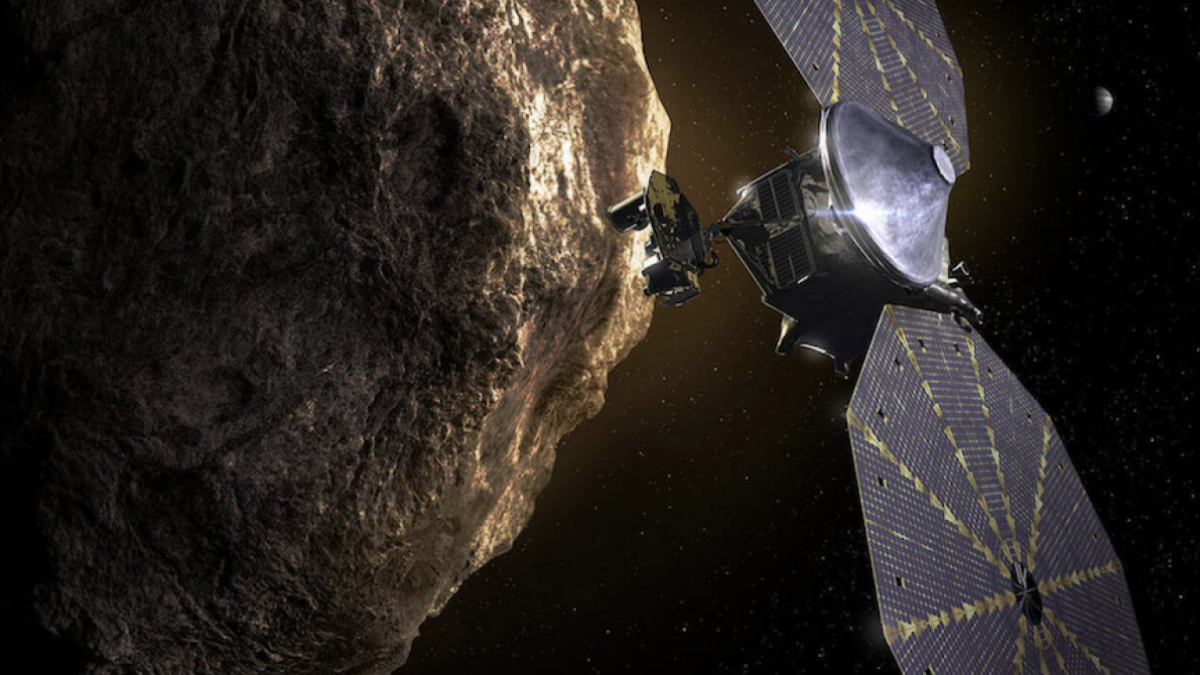A NASA spacecraft is traveling to the most mysterious asteroids in the solar system. On the way there, it snapped images of the curious, elongated asteroid dubbed “Donaldjohanson.”
On April 20, the over 50-foot-wide Lucy spacecraft approached as close as some 600 miles from Donaldjohanson, which is aptly named for the discoverer of the famed Lucy hominid fossil, paleoanthropologist Donald Johanson. The craft sped by at 30,000 mph, and used a specialized camera to capture a detailed view of the five-mile-wide asteroid.
The images show a unique-looking asteroid, with a narrow neck connecting the object’s two lobes.
If a scary asteroid will actually strike Earth, here’s how you’ll know
“These early images of Donaldjohanson are again showing the tremendous capabilities of the Lucy spacecraft as an engine of discovery,” Tom Statler, a NASA planetary scientist and program scientist of the mission, said in a statement. “The potential to really open a new window into the history of our solar system when Lucy gets to the Trojan asteroids is immense.”

New imagery of the asteroid Donaldjohanson captured by NASA’s Lucy spacecraft.
Credit: NASA / Goddard / SwRI / Johns Hopkins APL / NOIRLab
This Tweet is currently unavailable. It might be loading or has been removed.
(The asteroid seen in the animation above was observed at a distance of 1,000 to 660 miles away.)
Mashable Light Speed
The Trojan asteroids — two swarms of diverse asteroids trapped around the gas giant Jupiter (one in front and one behind) — are of profound interest to planetary scientists. These asteroids can’t leave Jupiter’s potent gravitational influence, so Trojan meteorites likely don’t land on Earth, depriving us of samples. Crucially, researchers suspect these icy rocks are captured relics of our solar system’s formation some 4 billion years ago. If so, the Trojans are the smaller building blocks of planets. They can help tell us how Earth, and the other planets, came to be.
“If we want to understand ourselves, we have to understand these small bodies,” Hal Levison, a planetary scientist who leads the unprecedented mission to investigate the Trojans, previously told Mashable.
“This is the first reconnaissance of the Trojan swarms,” Levison added.
This high-speed flyby of Donaldjohanson is the spacecraft’s last “dress rehearsal” before it arrives at its first Trojan in August 2027, named Eurybates. To investigate the Trojans, Lucy is equipped with a suite of powerful cameras, including the Lucy Long-Range Reconnaissance Imager, or L’LORRI, which captured the images above.
While it’s not unusual for an object in space to be a “contact binary” — meaning two objects that orbited so closely they eventually merged — NASA noted that “the team was surprised by the odd shape of the narrow neck connecting the two lobes, which looks like two nested ice cream cones.”
Donaldjohanson isn’t a primary target of Lucy’s mission, but its unusual shape and structure will provide further insight into the origins of such primordial space objects, how they formed, and how our world formed.
